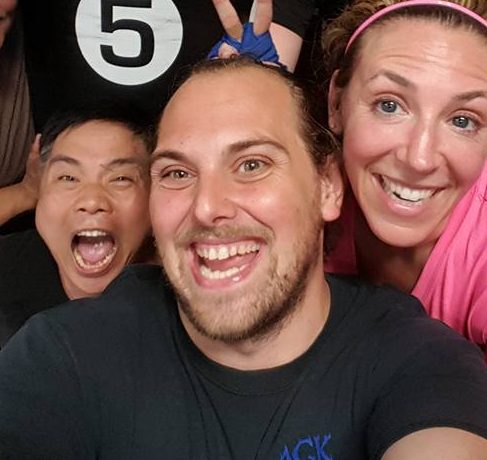One of the most common questions people ask when calling a martial arts school is:
“How much do martial arts classes cost?”
Any time one is considering a new venture, the cost is certainly an important consideration. But, it is important to recognize that martial arts training is more than a commodity to be selected based on price alone.
There are several factors that might affect the price of martial arts classes, and it is important to do your research to find a school that provides what you’re looking for at a price point at which you feel comfortable.
Let’s talk about some of the common price ranges for martial arts classes, and what they usually include. Keep in mind, this is a very general article, and there are exceptions to each of the following ideas, both for better and for worse. Since Vision Martial Arts is located in Patchogue, NY we have based the information in this article on the norms one could expect in and around Suffolk County; regional differences may also be a factor in the price of martial arts training.
For the purposes of this article, we will examine the three main types of martial arts programs, each of which comes with its most common practices, general price ranges, and classes of service:
The Community Program
These programs are generally taught in churches, community centers, and parks, or sometimes the instructor will even lease space in a friend’s martial arts school. It is most common for these programs to be the least expensive.
Community programs tend to be part-time operations. Their hours and class variety tend to be limited. Because they do not have a dedicated space, they may be lacking some of the amenities of larger schools. This is not necessarily a bad thing, as they also tend to focus on smaller groups of students, providing greater connection where maybe some of the window dressing is missing.
Classes in community programs are more prone to scheduling changes, as they are at the whim of whichever organization is providing the space. The trade-off is that they also tend to be far more flexible about finding alternate training venues, such as the beach, the instructor’s backyard, or other creative locations, which can lead to exciting adventures and memories made.
When looking at community martial arts programs, expect to see prices anywhere from free on the low end to around $100 per month on the high end. These schools tend to offer family and other discounts as they have very low overhead. Payment methods are more likely to be cash or check, with tuition or dues payable per class, monthly, or by session. These smaller programs tend to favor informal or short-term memberships rather than contracts or other long-term arrangements.
The Part-Time School
Whereas community martial arts programs tend to have no dedicated home of their own, many instructors take their classes to the next level by leasing a commercial space. These schools tend to be in strip malls or storefronts, and while they may only operate on a limited schedule, they have full-time access to the school.
These schools tend to offer more regular schedules because they are not competing for limited space, though because they are part-time, the schedules themselves may be limited to a few nights per week. Also, because they have a dedicated space, they can create a training atmosphere that is pleasant and safe, with permanent installations of pads and a greater ability to store training equipment that will enhance the student’s experience.
Part-time schools tend to have one or two main instructors but may also have a committed team of volunteer senior students who provide additional support in class. Because of the need to balance their regular jobs, their families, and their training, instructors for part-time schools may group students of a wider range of ages or abilities in a single class. As with anything, there are both pros and cons to this. Some martial artists want to train with other adults and not worry about little kids in class; others may prefer the family-style setting that allows parents and children to train side-by-side.
For those looking for a long-term, regular commitment to martial arts training, but who are more conscious of budgetary considerations, the part-time school may be the perfect blend of deciding factors. Prices for classes at a part-time martial arts school are usually a bit lower than the national average, ranging from $75 per month to $150/month.
One other consideration for this type of school is membership type. There may be options to pay less, but have only one out two nights per week to train versus paying more for unlimited classes. Part-time schools may also prefer to use contracts or billing agreements. This helps them budget more accurately in the long term. Check the terms very carefully to see what their cancellation policy is. A contract is not necessarily a bad thing, it is simply something to examine closely before signing. You should never feel pressured to sign a contract; if you do not feel 100% comfortable, then don’t feel obligated to sign; there are other schools around that you can check first.
The Professional School
In this sense, “professional” simply means that the school is run as a full-time business that is the owner’s main profession. It does not necessarily mean the instruction will be any better or worse — that is a topic for a future post. Because these facilities are full-time, they usually have far more robust schedules, often operating 6 or 7 days per week for many hours per day. Full-time martial arts schools may have more classes, and more types of classes available.
While the operation is far grander, residing in strip malls or even standalone facilities, many professional schools still prefer smaller more personal classes, while others may offer far larger and more energetic sessions. It is always important to make sure the class style will fit your preferences. Full-time schools also usually have more equipment available, and larger professional staffs to ensure every member has the best experience possible. In fact, these schools will spend as much time and effort on customer service as on the training experience, and like the community program, will often find creative ways to extend those lessons beyond the usual training space.
Many larger professional schools also spend ample time and invest heavily in staff development. They may have several instructors on staff who attend national certifications, such as those offered by Skillz Worldwide, or those offered by the instructor’s organization. Because of this, it is common to see lessons that go far beyond the martial arts. Kids martial arts classes will have a heavy emphasis on life skills, and adult classes may also offer life coaching, mindset training, and more. These schools may even offer classes such as fitness kickboxing, yoga, or kettlebells, and workshops that are completely unrelated to martial arts to build relationships within the community.
Because of the level of investment and service in a full-time school, expect to pay a bit more in return for the added value. While there are full-time schools charging $100 per month or less, this is certainly the exception; it is far more common to see prices for martial arts classes at these schools in the range of $150 to $500 per month. Some schools also have add-on and upgrade programs, such as leadership classes, competition teams, etc.
Owners of full-time schools usually fall pretty firmly into one of two membership option categories: The contract (usually yearly, though longer and shorter options may be available) and the month-to-month option. There are a few schools that will offer both, with an incentive for longer-term contracts. Again, each has its pros and cons, so just be sure that all of the terms are crystal clear, including what happens when it is time to move on, what their freeze policy (if any) might be, and what happens at the end of the contract.
Other Considerations
While monthly tuition is usually what is discussed when considering the price of martial arts classes, there are some other factors that may affect your total investment.
As mentioned above, many schools, especially full-time establishments, will offer add-on and upgrade programs, as well as optional private lessons. These may add an additional $25 to $100 per month. While there is added cost, they also often come with perks that provide equal or greater value. Like with contracts, it is important to fully understand what is included, what to expect as far as payment, and what happens if you change your mind. With add-on programs, it is usually a small extra fee, but some schools offer long-term upgrades that provide specialized training, uniforms, etc.
It is a common practice with schools of all types to charge additional testing fees each time a student is promoted. Sometimes it is simply a way to spread out the annual cost of training, though some schools may charge hundreds of dollars per test in order to generate additional income or provide grander events. A newer trend in the martial arts industry is to include testing in regular tuition. This helps detach the learning experience from the financial transaction, which allows students to progress based on merit, not whether their bill has been paid or not.
Depending on the style of martial arts, some training equipment may be required. You may need a uniform, protective equipment, training weapons, or even mandatory retail purchases. Different schools handle this differently, so it is helpful to ask what gear you will have to purchase over the course of your training experience. It is not uncommon for schools to require you to purchase your equipment directly in their pro shops. This helps them keep tuition costs down, but also ensures that the gear you purchase is the correct type and the highest quality.
Many schools belong to organizations that require secondary fees. This may be an insurance fee in the case of the community martial arts program, or a governing association in the case of many Tae Kwon Do schools.
Conclusion
Choosing a martial arts school is an exciting and involved process. Make sure, above all, that you (or your child) feel safe, happy, and welcomed in any school you attend. When asking about price, remember that “How much do karate classes cost?” is just the beginning of the conversation. Find out about terms, added fees and expenses, testing fees, and what is included in the cost. A higher price can often provide higher value, and while lower monthly rates save you money they may speak to other costs or frustrations. Or they may not.
Martial arts is a long-term lifestyle investment, so take your time, do your research, and weigh the price against the value you expect to receive.
If you are looking for a school that meets your value and budgetary needs in the Suffolk County area, give Vision Martial Arts a call at 631-707-5610 and we’ll be happy to help you find a school, even if we end up not being the fit you need.
Ready to get the conversation started? Click the button below to be taken to our main page where you can explore the programs offered at our full-time Patchogue facility:
Vision Martial Arts
218 Medford Ave
Patchogue, NY 11772
631-707-5610

Author: Michael A Evans
Michael’s journey in martial arts began in 1985, and he now proudly holds a 6th-degree black sash, mentored by Moises Arocho. As the founder of Vision Martial Arts in Patchogue, NY, he not only offers robust martial arts training for adults but is also deeply committed to childhood development. Through martial arts and various movement techniques, he empowers kids and adults to realize their potential and shine. Beyond the martial world, Michael wears the hat of an editor for Onward Science, and collaborates on the enchanting “Little Laurie Science Stories” book series and the Ninja Née Science Education Program. Educated at the NY College of Health Professions, he brings therapeutic relief to many as the lead massage therapist at Massage LI. Michael is also an ancient skills educator with Forgotten Skillz.

















